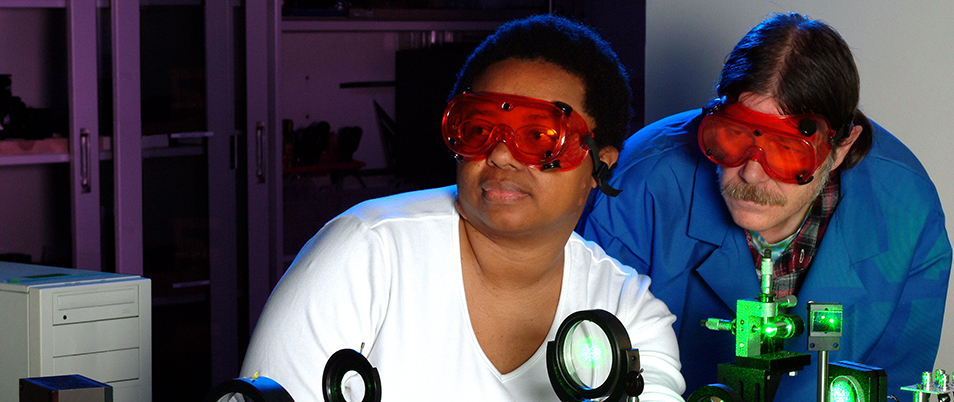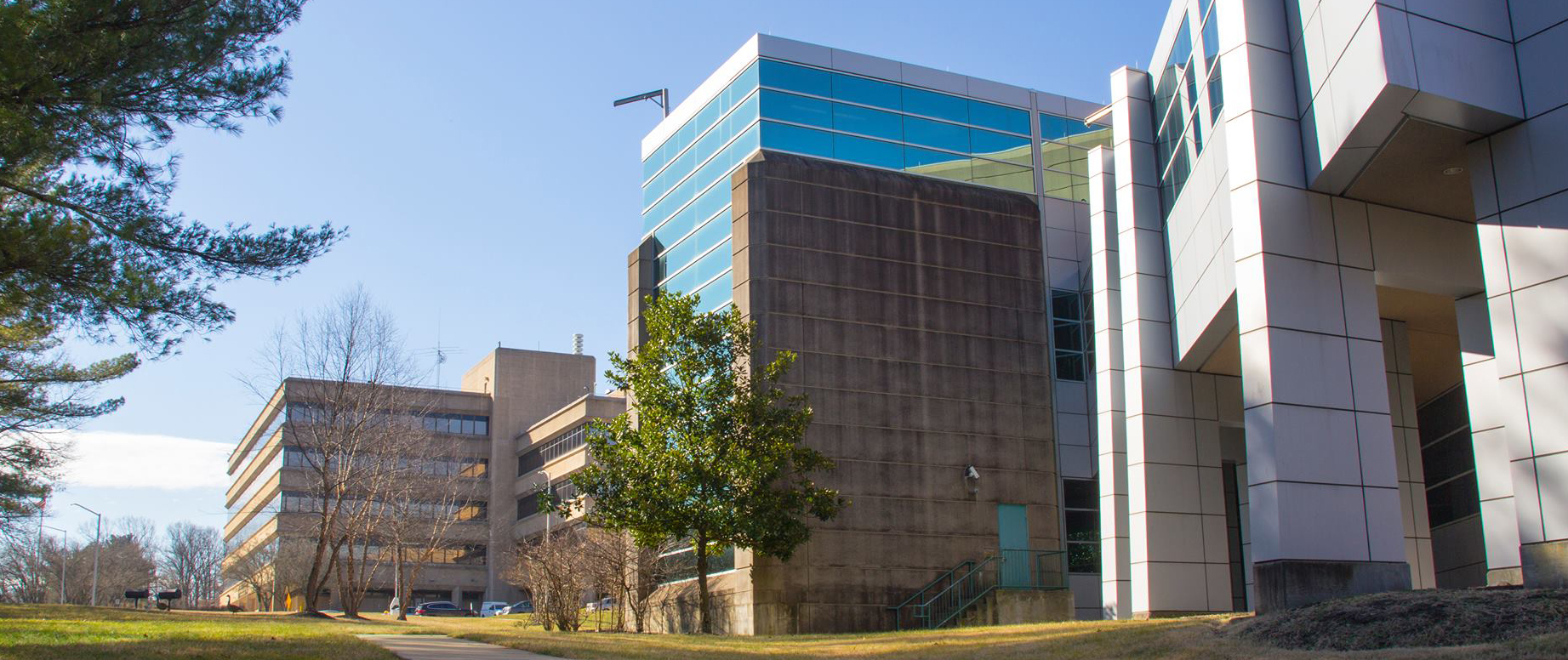Welcome to Adelphi Laboratory Center.
The Adelphi Laboratory Center (ALC) is a 207- acre installation located just to the north of Washington, D.C., in suburban Adelphi, Maryland. ALC is the headquarters of the U.S. Army Combat Capabilities Development Command Army Research Laboratory, known as DEVCOM ARL, which is the Army’s research laboratory. ARL is nested within DEVCOM and the Army Futures Command, and its mission is to Operationalize Science. A hallmark of ARL’s mission is collaborative partnerships to broaden Army access to expert talent and accelerate transitions of science-enabled capabilities.
ALC Today/ Current Mission
ALC houses a present-day workforce of approximately 2,530 people. The majority of the employees at ALC are employees for DEVCOM ARL. Other tenant agencies include the Army Contracting Command – Aberdeen Proving Ground Adelphi Division, Maryland Army National Guard, Army Reserve, Army Sustainment Command’s Logistics Readiness Center, 93rd Signal Network Enterprise Center, U.S. Army's Communications-Electronics Command C5ISR, and Army Futures Command.
ALC was established in 1969 on 137 acres of land that were transferred from the adjacent U.S. Naval Ordnance Laboratory (NOL). Construction of the Army facility commenced in 1971, and occupancy by the scientists and support staff of the Harry Diamond Laboratories began in 1973. The facility was constructed to resemble a campus-like setting on wooded, rolling lands and consisted of approximately 22 buildings that were constructed between 1971 and the late 1980s. During the mid-to-late 1990's, an additional 70 acres of land were transferred from the Navy to ALC, resulting in a present-day total of 207 acres.
ALC was originally the site of the Harry Diamond Laboratories, named after pioneer radio engineer Harry Diamond. The laboratory was the Army's lead facility for fluidics and nuclear-effects technology research, as well as for the development of electronic fuzing for projectiles and missiles. Two satellite facilities (one at Woodbridge, Virginia, and one at the Blossom Point Research Facility, Maryland) provided field testing support. (The Woodbridge facility was administratively transferred in its entirety to the U.S. Department of the Interior in June 1998.)
The Harry Diamond Laboratory dates back to the 1940s when a group of scientists and engineers at the National Bureau of Standards, located in Washington, D.C., were organized into the Ordnance Development Division. This group was initially formed to develop fuzes for non-rotating munitions such as bombs, rockets, and mortar shells. A major early accomplishment of this group, the development of radio doppler proximity fuzes, was heralded as one of the outstanding scientific developments of World War II, second only to the atomic bomb.
In 1953, the Ordnance Development Division was transferred to the Department of the Army and renamed the Diamond Ordnance Fuze Laboratories. In 1962, the organization was renamed the Harry Diamond Laboratories, and the Army assigned it a broadened mission as a laboratory of the U.S. Army Materiel Command. When plans were made in the 1960s to move the National Bureau of Standards to a new location in the Washington, D.C. suburbs, a joint Army and Navy study group recommended that new and separate HDL facilities be constructed on a 137-acre site parceled from the existing Naval Ordnance Laboratory property in Silver Spring, Maryland.
In 1992, when the U.S. Army Materiel Command established the Army Research Laboratory as a major subordinate command, the facility was renamed the Adelphi Laboratory Center.
Since 1953 the laboratory has made a number of significant technical and scientific advances in electronics, radar, fluidics, proximity fuses, and the effects of nuclear irradiation on electronics. During its history, the laboratory has developed:
- The first all solid-state radio proximity fuze
- The first automated production techniques for low-cost radio proximity fuzes
- The M990 series electrical bomb used by the Navy
- The M904/905 series mechanical bomb fuzes used by the U.S. Air Force
- The Mk-43 proximity bomb sensor for the U.S. Navy Snakeye weapon system
- A series of fuzes for armor piercing antitank munitions
- Guided missile fuzes for the Army, Navy, and Air Force
- Smaller, less expensive microwave radar antennas
- Microwave semiconductor diode switches
- The first optical character recognition reader
- An ultrasonic flow meter and heart monitor system
- Advanced composite technologies for armor
- Smart munitions systems
- Lithium batteries
- Global positioning registration round for artillery
- Fluidic devices for sensing temperatures in jet aircraft engines, rocket thrust vectoring, and for weapons stabilization
- Studies in the fields of transient radiation and internal and external electromagnetic pulse effects on electronics
Powder Mill Gate
The ALC Access Control Point will be closed from 6 p.m. to 5 a.m. daily, beginning Sunday, April 21. All inbound and outbound traffic during these hours will have to call the 24/7-manned line at 301-394-1100 for access. Security guards will be available to assist
Questions regarding installation access please call: (301) 394-1100.
Access Control Resources:
In accordance with Homeland Security Presidential Directive 12 and Army Regulation 190-13, all visitors and uncleared contractors desiring unescorted access to ALC, must be vetted through the National Crime Information Center Interstate Identification Index (NCIC III).
To complete a background check and be issued an installation access badge you must go to the ARL Badging Office located in the Diamond Building and complete an access request form.
Downloadable forms.
If you are denied access to the installation based upon information on your NCIC III check that you believe to be inaccurate or incorrect please see below on the procedures for getting the information corrected.
Visitors, contractors and vendors 18 years and older, entering ALC, who do not have a DoD identification card, will be subject to a background check before being allowed entry to the installation. Those who present a common access card (CAC card), Military ID, Military Dependent ID, Gold Star ID, or other valid DoD credential won't be affected
All visitors to the Adelphi Laboratory Center (ALC), who do not possess a Common Access Card (CAC) or another approved Federal identification card must be vetted using the National Crime Information Center (NCIC) Interstate ID Index (III), which is the Army minimum baseline background check for entrance onto Army installations (Reference: Policy Memorandum USAG-ALC-50, Army Directive 2014-05 and Chief of Staff, Army Memorandum Dated 14 Oct 14).
In order to reduce access vetting time, ALC tenant organizations that schedule or invite visitors to the installation will submit:
· USAG ALC Installation Access Reuest Form 191 and a sponsoring memo; this will ensure delays do not occur at the access control point.
· Access vetting can be provided in an emergency (within 24 hours) by contacting ALC security office at 394-1100.
· Once vetted, visitors will be provided a pass or credential not to exceed one year in length dependent upon their function or need for access.
Visitors will experience delays at the access control point if required vetting documents are not provided 72-hours prior to the visit:
· All visitors require a vetted ALC/ARL escort.
All properly vetted ALC/ARL personnel and ALC Contractors may escort up to:
· 1 vehicle and 3 personnel or 4 personnel walking
Please provide these documents at least 72 hours prior to the date of the visit to the ALC Garrison Security Control Center via email to Captain Daniel Conte at daniel.l.conte.civ@mail.mil and Officer Jennifer Fanning at jennifer.l.fanning4.civ@mail.mil
NOTE: FOR BADGING PURPOSES, THE ACCESS CONTROL/BADGING OFFICE STILL NEEDS TO CONTINUE TO RECEIVE VISITOR NOTICES. IN ADDITION, GROUP PASS REQUESTS AND NON-US CITIZEN UNOFFICIAL VISIT REQEUSTS STILL NEED TO BE SENT TO JOSE TORRES AT 394-5687 OR EMAIL: jose.torres11.civ@mail.mil WITHIN THE TIMELINES REQUIRED.
POC: Daniel Conte, 301- 394-4475, daniel.l.conte.civ@mail.mil
Visitor Access
(301) 394-1100
Bldg. 205
Adelphi Lab Center
Adelphi, MD 20783
Monday through Friday
8 a.m. to 4:30 p.m.
ARL Badging Office
(301) 394-2515
Monday through Friday
7 a.m. to 3:30 p.m.
The Adelphi Laboratory Center is located in Maryland, part of the Washington, D.C. metropolitan area. ALC is located approximately 25 miles southwest of central Baltimore and 10 miles north of Washington, D.C and is easily accessible to Interstate 95 (the East Coast's primary north-south transportation coordinator and the Capital Beltway I-495. The address of ALC is 2800 Powder Mill Road, Adelphi, MD.
All visitors to ALC, who do not possess a Common Access Card (CAC) or another approved Federal identification card must be vetted using the National Crime Information Center (NCIC) Interstate ID Index (III), which is the Army minimum baseline background check for entrance onto Army installations.
In order to reduce access betting time, ALC tenant organizations that schedule or invite visitors to the installation will submit:
- USAG ALC Installation Access Request Form 191 and a sponsor memo.
- Access vetting can be provided in an emergency (within 24 hours) by contacting the ALC Security Office at 394-1100.
- Once vetted, visitors will be provided a pass or credential not to exceed one year in length dependent upon their function or need for access.
- All vistors required a vetted ALC/ARL escort.
All security clearances must be faxed to the U.S. Army Research Laboratory Visitor's Desk at( 301) 394-2087.
Non-U.S. citizens representing a foreign government, industry, or academic institution must do the following:
- Submit a visit request to the Foreign Disclosure Officer at
(301) 394-4977, or fax at 301-394-4583 - Submit this request via the correct official diplomatic channels prior to the visit
U.S. Citizens representing industry or academic institution must contact their ARL point of contact at least 48 hours prior to arrival.
DSN: 290
JPAS Code: W262AA5
Receptionist: (301) 394-2515
Facsimile: (301) 394-2087
The ALC Physical Security Office assists members of the Adelphi Laboratory Center community by providing guidance on law enforcement, emergency response, and security issues. ALC Physical Security Office provides 24/7 force protection, and community assistance by maintaining liaison with federal, state, and local law enforcement agencies. the ALC Physical Security Office defends good order and discipline by enforcing the rule of law and policies of the APG Garrison Commander and the USAG ALC Garrison Manager.
Physical Security
(301) 394-1100/1115
Provost Martial
Phone: (301) 394-1100
Hours of Operation: 7:30 a.m. - 4:30 p.m.
Police Services
Phone: (301) 394 - 4475
Hours of Operation: 24/7
For emergencies dial 911
The Final PFAS PA/SI report for Adelphi Laboratory Center has received technical review by the Garrison, Region, USACE District, and USACE CX; and legal review by the USAEC Office of Counsel. All comments have been resolved, incorporated, and backchecked.
This SI report was prepared in accordance with the 06 July 2022 OSD Memorandum: Investigating PFAS within the Department of Defense Cleanup Program. One site on Adelphi Laboratory Center exceeded the OSD screening levels and requires a remedial investigation.








